An Adventure in Crab Fishing and Cooking — Dungeness Crab Thermidor
Sometimes adapting a recipe can be a tricky thing when you start substituting ingredients. And when you adapt a complicated recipe like Julia Child’s Lobster Thermidor, it gets even more daunting, especially when you’re replacing the main ingredient, lobster, with Dungeness crab. It can be one of those kitchen experiences where you feel like you’re skating on the edge of disaster and wonder if you should have a backup plan. But when you’re successful, there’s nothing like the compliments all around the table from your dinner guests, as well as empty plates!
I’ve been wanting to adapt this recipe for Dungeness crab for some time now. One, because I’ve been fascinated with the Lobster Thermidor recipe ever since watching Julie & Julia last year, and two, because I love to go crabbing at Nehelam Bay, about an hour and a half from here.
Making this dish was a two-day workout.
The first day started before dawn as I headed to meet my outdoor buddy, Anne Thompson, at her house at 6:30. She had volunteered to drive us in her SUV. When we got to Jetty Fishery’s docks at about 8, the tide in Nehelam Bay was heading swiftly out to sea, sweeping the crabs toward the mouth of the bay where it meets the ocean. In Oregon during the winter rains, the bays and estuaries along the coast take on a different life for the critters that prefer salt water, as the rain-swollen rivers will carry so much fresh water into the bay that it drives the creatures that usually dwell deeper in the bay and prefer salty waters back into the ocean or toward the mouths of the bays.
Anne and I hurriedly got our crab pots, with stinky fish carcasses tied in the middle of them, into the water. A few minutes later we were hauling up lots of small crabs and a few barely legal ones that we would toss into the cooler filled with seawater. Then things really slowed down. When the tide changes and the ocean reclaims its dominion over the bay, that’s usually when the critters you’re after return.
By the time we were heading home from Garibaldi after about 2 p.m., we had five barely legal crabs and ten giants in the cooler under ice. (You don’t want to haul the crabs home in the ice chest filled with seawater because they’ll deplete the oxygen and die. Drain the cooler of seawater and fill it with ice. The ice will put the crabs into a semi-comatose state and keep them alive for several hours.)
When we got back to Salem, we divided our bounty and I headed home to steam the crabs in order to get them cooked and into the refrigerator for our dinner the next day. If you decide to catch your own crabs for this recipe, go crabbing the day before you plan to serve the meal, as it will take almost an entire day to prepare the dish. No wonder Lobster Thermidor is such a pricey item if you ever see it on a dinner menu.
“So many steps are involved in the preparation of a really splendid Lobster Thermidor, no wonder it costs a fortune in any restaurant! But it is not a particularly difficult dish to execute, and everything may be prepared in advance and heated up just before serving.”
— Julia Child, Simone Beck and Louisette Bertholle
Well, it may not be a particularly difficult recipe to execute, but I did find it very time-consuming. If you don’t want to catch your own crab, you can find live Dungeness at many Asian stores, including Uwajimaya in Portland and Seattle, or frozen at your local grocery store. You can also find Dungeness crabmeat in the seafood section of many grocery stores. It’s a convenient but pricier option if you don’t want to deal with cracking whole crabs. The nice thing about using whole crabs is that you can keep the carapace to stuff the crabmeat back into for a really nice presentation. If you buy packaged crabmeat, you’ll have to bake the Thermidor in an oven-safe dish.
Dungness Crab Thermidor, inspired by Julia Child’s Lobster Thermidor.
Steaming the crab
- One large onion, sliced thinly
- One large carrot, sliced thinly
- 6 sprigs of parsley
- 3 cups (720 ml.) of dry white wine
- 3 cups (720 ml.) of water
- 1 teaspoon (5 ml.) salt
- 2 bay leaves
- 1/4 teaspoon (1.5 ml.) thyme, dried or fresh
- 6 black peppercorns
- 1 tablespoon (15 ml.) tarragon, dried or freshly chopped
- 1 tablespoon (15 ml.) butter
- Dungness crab (plan on 1 per person)
- In a very large pot, combine wine, water, vegetables, herbs and seasonings and simmer for 15 minutes.
- Bring to a boil and add the live crabs. Cover with lid and steam for 20 minutes. If you’re cooking more than 3 or 4 crabs, you will want to open the lid and pull the crabs that are at the bottom of the pot to the top and steam for another 10 minutes to make sure the crabs that were at the top of the pot are fully cooked. They should be a bright orange when done.
- Remove cooked crabs and set aside to cool. After they’ve cooled, you can place them into Ziploc plastic bags and refrigerate them. If you’ve purchased the crabs live from the store and are making the meal the same day, there’s no need to refrigerate them.
- Continue boiling the liquid in the crab-steaming pot until you’ve reduced it to half its original volume. Let cool and strain into a container and refrigerate to use as the base of the sauce.
- Note: If you’re using packaged crab meat, simply boil all of the vegetables and herbs listed above in a pot, and reduce the liquid to use as the base of the sauce. At this point, everything can hold in the refrigerator overnight until the day of the dinner, when you’ll need to clean the steamed crab, make the sauce and assemble the final dish.
Cleaning the steamed crab
- To clean the steamed crabs, first remove its pencil-shaped stomach flap, breaking it off where it attaches to the carapace. Click here for a link to illustrated steps to clean Dungeness crabs.
- Hook your thumb under the spot where the stomach flap attaches to the carapace and with one firm motion, pull the carapace from the rest of the crab’s body. Remove any material in the carapace and set aside.
- With a spoon or using your fingers, scoop out the internal organs of the crab. Also remove its lungs or gills that line the sides of its internal body.
- Crack the crab’s exposed body in half down the middle and start picking out the meat, setting aside the meat in a bowl. Carefully crack the shells of its legs using a crab-cracker tool and remove the flesh. The more flesh that you can extract in large pieces, the better. After cleaning a crab you’ll realize why those little tubs of crabmeat are so pricey at the grocery store. It’s a laborious process, for sure.
- After you’ve finished cracking the crab, cover the bowl of crabmeat and refrigerate.
- Scrub the inside cavity of the crab carapaces with hot water, drain and put them in large Ziploc plastic bags and refrigerate.
Making the sauce
- Mushrooms, stems picked off. Use only tops sliced thinly. You’ll need about 4 mushrooms per crab.
- 10 tablespoons (150 ml.) of butter
- 3/4 cup (180 ml.) heavy cream, plus additional 1-2 tablespoons (15-30 ml.)
- 2 egg yolks
- 1/2 teaspoon (25 ml.) of cayenne pepper
- 1/2 tablespoon (2,5 ml.) of dry mustard
- 1/2 cup (120 ml.) Port
- 6 tablespoons (90 ml.) of flour
- In a mixing bowl, combine the 3/4 cup of cream, cayenne pepper, dry mustard and egg yolks. Mix thoroughly and set aside.
- In one saucepan, melt 5 tablespoons of butter over medium heat and sauté mushrooms. When mushrooms are soft and brown, add the sauce base of reduced liquid that you reserved from steaming the crabs. Add the Port. Simmer until volume of liquid is reduced roughly in half. Turn heat off and set aside.
- In another saucepan, melt the remaining 5 tablespoons of butter over low heat. Add the 6 tablespoons of flour and stir briskly with a whisk. The flour will quickly absorb all of the melted butter, so you may have to add 1-2 tablespoons of cream slowly until the mixture resembles a paste. Cook the flour over low heat for about 2 minutes until the edges start to bubble from the heat.
- Using a ladle, slowly drizzle in the liquid from the mushroom saucepan a little at a time to thin the flour. Keep stirring with a whisk over low heat. After you’ve added 3 ladles of mushroom liquid, turn off the heat and empty the flour mixture into the saucepan containing the mushroom mixture.
- Over low heat, stir the combined mushroom and flour mixture until the flour is totally incorporated into the sauce. The sauce will quickly thicken into the consistency of a very thick gravy.
- At this point, slowly drizzle in the egg and cream mixture from the bowl, whisking constantly to incorporate the egg and cream into the sauce. Stir for 2 or 3 minutes until the sauce begins to boil, then turn off the heat. At this point the sauce is finished.
Final assembly
- 1/4 cup (60 ml.) of shredded Parmesan cheese
- Preheat the oven to 400 degrees.
- Put the crabmeat in a large mixing bowl and slowly fold in 2/3 of the sauce, taking care not to break up the large chunks.
- Take the crab carapaces out of the fridge and if they’re wet, wipe the inside cavities with a paper towel.
- Using a spoon, fill the crab carapaces with the crab mixture, taking care to push the mixture gently into the crevices of the crab carapace.
- Place a spoon or two of the remaining sauce on top of the stuffed crab and top with the shredded Parmesan. Place the stuffed crab carapaces on a baking sheet or pan and bake for 10-15 minutes until the cheese is melted and begins to turn golden.
- Serve garnished with chopped parsley.
Since this is an incredibly rich dish, simple side dishes like boiled new potatoes, sautéed or steamed green beans with almond slivers or boiled spinach will go a long way toward making the meal less heavy. If you’re wondering what kind of wine to serve, a dry pinot gris or stainless-steel fermented chardonnay would go very well with the meal. For our dinner, our good friends Tina and Steve Martin brought over a bottle of pinot gris from Left Coast Cellars, an excellent Oregon winery, as well as a bottle of sparkling raspberry chenin blanc from Temecula Hills Winery in California. Both went equally well with the dinner.
Enjoy!
— Vic
Category: Seafood
About the Author (Author Profile)
Victor Panichkul is a journalist and writer by training; a cook, wine lover and photographer by passion; and a lover of the outdoors since moving to Oregon more than 10 years ago. He is a native of Bangkok, Thailand.






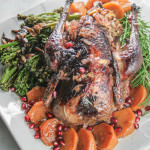

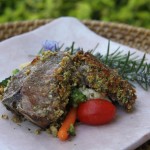

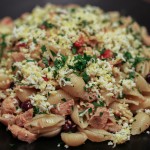
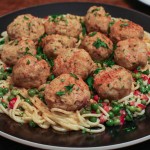
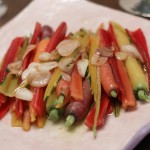
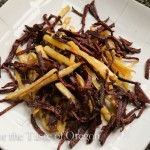


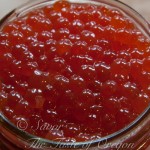
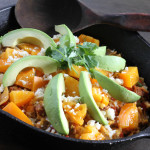
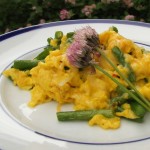
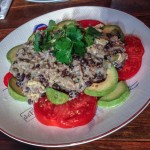

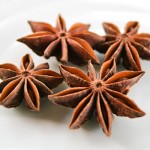
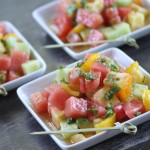






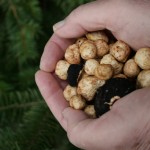
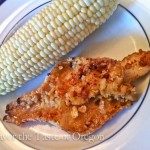


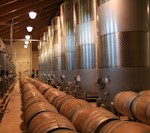
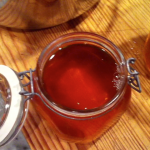











I really didn’t know how much time and effort went into this dish, but oh, my dear friends, it was worth it!! Thank you so much, Vic and Charles, for the honor of being at your dinner table.
Thanks for being such willing culinary test subjects! My backup plan if I failed was to haul everyone over to Paddington’s Pizza!
Vic
Wow, Vic. This is more complicated than eye surgery!
I am humbled before kitchen greatness.
I’m still working off the calories from the dinner!
This turned out a lot better than I thought. Thought port may be mistake but worked. Awful lot of washing up in morning, thanks x
It’s definitely tedious to make but delicious!